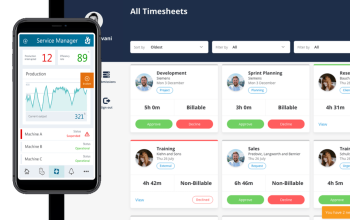Understanding user engagement in real-time is essential for success—whether you run a blog, manage a SaaS product, or build mobile apps. You don’t need bulky analytics platforms packed with unnecessary features that slow down performance and bloat your code. Instead, lightweight, real-time view tracking tools offer a leaner, faster, and more efficient alternative to keep your digital properties in check. These solutions are ideal for creators and developers who want precise metrics without sacrificing site speed or getting lost in complex dashboards.
Real-time tracking isn’t just about numbers—it’s about making immediate decisions. Knowing how many people are viewing your content, where they’re coming from, and how they’re interacting helps you iterate quickly and create better user experiences. In a world where YouTube creators thrive on YouTube analytics API, track YouTube stats, and monitor YouTube subscriber count, it’s clear that real-time insights fuel growth across every digital channel. This article explores how you can bring the same real-time tracking power to your own blogs, apps, and SaaS platforms—without the technical overhead or clutter.
The Problem with Traditional Analytics Platforms
Most traditional analytics tools like Google Analytics are designed to be one-size-fits-all—but they often end up being bloated, invasive, and overly complicated. While they offer a comprehensive range of features, many businesses only need a few core metrics: page views, traffic sources, and session duration. The rest becomes noise, cluttering up reports and dashboards while adding unnecessary weight to your codebase. For developers and content creators who prioritize speed and simplicity, this can become more of a hindrance than a help.
Furthermore, traditional analytics platforms can sometimes violate privacy standards or require cookie consent popups that interrupt the user experience. This is especially problematic in regions where data protection regulations are strict. A lightweight, real-time view tracker can provide the essential metrics without triggering compliance concerns. Think of it as the minimalist alternative: no cookies, no unnecessary scripts, and no intrusive tracking. For teams focused on performance, privacy, and usability, ditching the bloat is often the smartest move.
Why Real-Time Tracking Matters
In the fast-moving world of online content and SaaS, timing is everything. Real-time tracking allows you to see how users are engaging with your product or content the moment it happens. This gives creators, marketers, and developers the power to respond instantly—whether that means adjusting messaging, troubleshooting issues, or scaling up infrastructure. Just as creators rely on YouTube channel stats and YouTube video stats to optimize content on the fly, you can apply the same logic to your platform or app.
Real-time insights help you capture momentum during high-traffic periods. For example, when launching a new blog post or marketing campaign, immediate data feedback can validate if your headline works, if your CTA converts, or if visitors are bouncing. Without real-time data, you’re always reacting to yesterday’s results. Just like YouTube earning check tools offer creators a glimpse into their latest revenue performance, real-time analytics empower website and SaaS owners to maximize value the moment it happens. It’s actionable insight, not just historical recordkeeping.
Implementing Lightweight Tracking in Blogs
Bloggers and content creators often struggle with slow page speeds due to heavy analytics scripts. Lightweight real-time tracking changes that by using minimal JavaScript to measure only what matters—views, referrals, bounce rate, and engagement time. These tools are easy to implement and don’t require you to sign up for a complex dashboard or share data with a third-party giant. A simple embedded script can start collecting real-time stats immediately without overwhelming your website.
For bloggers who also create YouTube content, pairing your blog’s real-time tracking with YouTube analytics API allows a broader view of audience behavior. You can see how viewers move from your videos to your blog and what content keeps them engaged. Integrating YouTube stats and your own website analytics gives you better control over your full content ecosystem. It’s about simplifying your toolset while gaining deeper, more relevant insights that truly help you grow.
Real-Time Metrics for SaaS User Activity
SaaS platforms thrive on data—especially when it can help optimize user onboarding, engagement, and retention. By integrating lightweight, real-time tracking into your app, you can monitor user behavior without weighing down your product. Know how many active sessions you have at any moment, where users drop off in your funnel, and which features are being used the most. This allows product teams to move fast and iterate based on actual user flow data, not assumptions.
Imagine you just launched a new feature and want to see adoption in real-time. With lightweight tracking in place, you can watch users interact with it as they explore your app. It’s no different from a YouTube creator watching YouTube subscriber count tick up during a livestream—real-time feedback creates an instant feedback loop. Moreover, unlike traditional analytics tools, these trackers won’t interfere with app performance or complicate your front-end code. They are built for developers, by developers, with clarity and speed in mind.
Tracking Mobile App Engagement Without Extra Load
Mobile app users demand performance and speed, and every extra library you add could slow things down. That’s why real-time, low-overhead tracking is perfect for apps. You can use mobile-optimized scripts or SDKs to collect data such as screen views, session durations, and user location without creating drag. Whether you’re running a cross-platform app or native builds, there are real-time tracking solutions tailored for mobile environments that won’t hurt performance.
Just like YouTube channel statistics help mobile-first creators understand their viewer base, mobile analytics tools can give app developers immediate insights into user interactions. For instance, if a crash or spike in usage occurs, real-time data helps you react quickly—rolling out fixes or alerts without waiting on batch-processed data. You can also pair your mobile engagement data with YouTube video stats if you’re promoting your app through content, giving you an end-to-end view of user journeys across platforms.
Custom Dashboards and Alerts with Real-Time Data
One of the best parts about real-time tracking is the flexibility it offers. You’re not tied to a bloated third-party dashboard—you can build your own! Using APIs or webhooks, you can create custom dashboards that display exactly what you need to see in real time. Want to know when your blog hits 100 concurrent readers? Or when your SaaS platform hits 500 daily active users? With real-time data and alerting, that information is just a ping away.
Many developers pair their custom dashboards with real-time tools like Slack or email integrations to stay on top of changes. Imagine being notified the moment a YouTube video drives a traffic spike to your product landing page—that’s the power of integrating YouTube analytics API with your website’s real-time tracking. Alerts help you catch trends as they start, not after they fade. With the right setup, you’ll have a smart, simple, and effective analytics stack tailored to your unique goals.
Conclusion
Real-time view tracking is no longer a nice-to-have—it’s essential for anyone managing a blog, app, or SaaS product in 2025. Instead of relying on bloated platforms that collect more than you need, lightweight real-time tracking tools help you stay fast, focused, and informed. Whether you’re tracking a viral blog post, monitoring app activity, or checking if a marketing campaign is working, the right data delivered at the right time makes all the difference.
Just like creators depend on YouTube stats, YouTube channel stats, and YouTube earning check tools to grow and adapt, you too can build smarter systems to watch and optimize your digital footprint. When you can respond instantly to what your users are doing, you can grow faster, serve better, and stay ahead of the curve. Real-time tracking, without the bloat, is your secret weapon in a world where speed, simplicity, and insight win every time.




